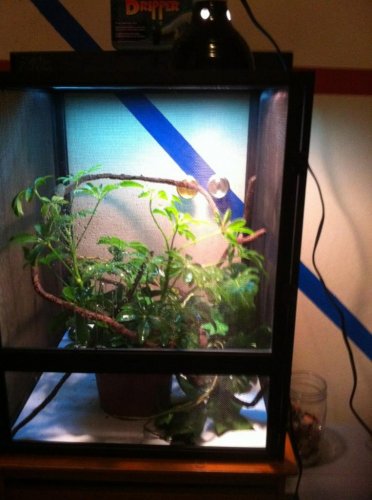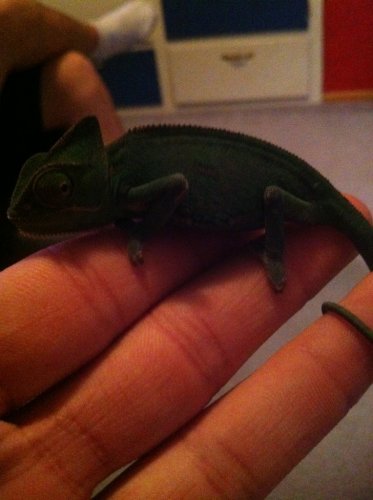dennislentz32
New Member
So I bought a chameleon on Thursday. It was kind of a spur of the moment thing. Didn't exactly know what I was getting into. So I have done some research and I have a few questions. I'm sure I could get the answers elsewhere but I would prefer this because it is more direct.
I think my chameleon is a female. I have yet to witness her eat or drink. I put crickets in there on Friday and I think she ate them unless they got lost somehow. I have mealworms in there now and I think they are untouched. I am concerned that I haven't been able to witness any action yet. I have a drip system going and have been misting consistently throughout the day.
There is a dust I am supposed to put on her right? What should I buy? And how often do I use it?
I have only false plants in there. Is it harmful to have those in there? Are real plants a "must-have?"
I'm attaching a picture of the setup. I need more stuff to put in it I know but I'm just glad I have the correct cage now. You can see her up at the top. Is it safe for her to be that close to the light? The temp stays around 80 and hydro stays around 60%. I have a 50 UVB fluorescent bulb and 50 W infrared heat lamp. Do I shut them both off at night?
Thank you ahead of time. I'm all ears for suggestions/opinions/must-do's!

I think my chameleon is a female. I have yet to witness her eat or drink. I put crickets in there on Friday and I think she ate them unless they got lost somehow. I have mealworms in there now and I think they are untouched. I am concerned that I haven't been able to witness any action yet. I have a drip system going and have been misting consistently throughout the day.
There is a dust I am supposed to put on her right? What should I buy? And how often do I use it?
I have only false plants in there. Is it harmful to have those in there? Are real plants a "must-have?"
I'm attaching a picture of the setup. I need more stuff to put in it I know but I'm just glad I have the correct cage now. You can see her up at the top. Is it safe for her to be that close to the light? The temp stays around 80 and hydro stays around 60%. I have a 50 UVB fluorescent bulb and 50 W infrared heat lamp. Do I shut them both off at night?
Thank you ahead of time. I'm all ears for suggestions/opinions/must-do's!









